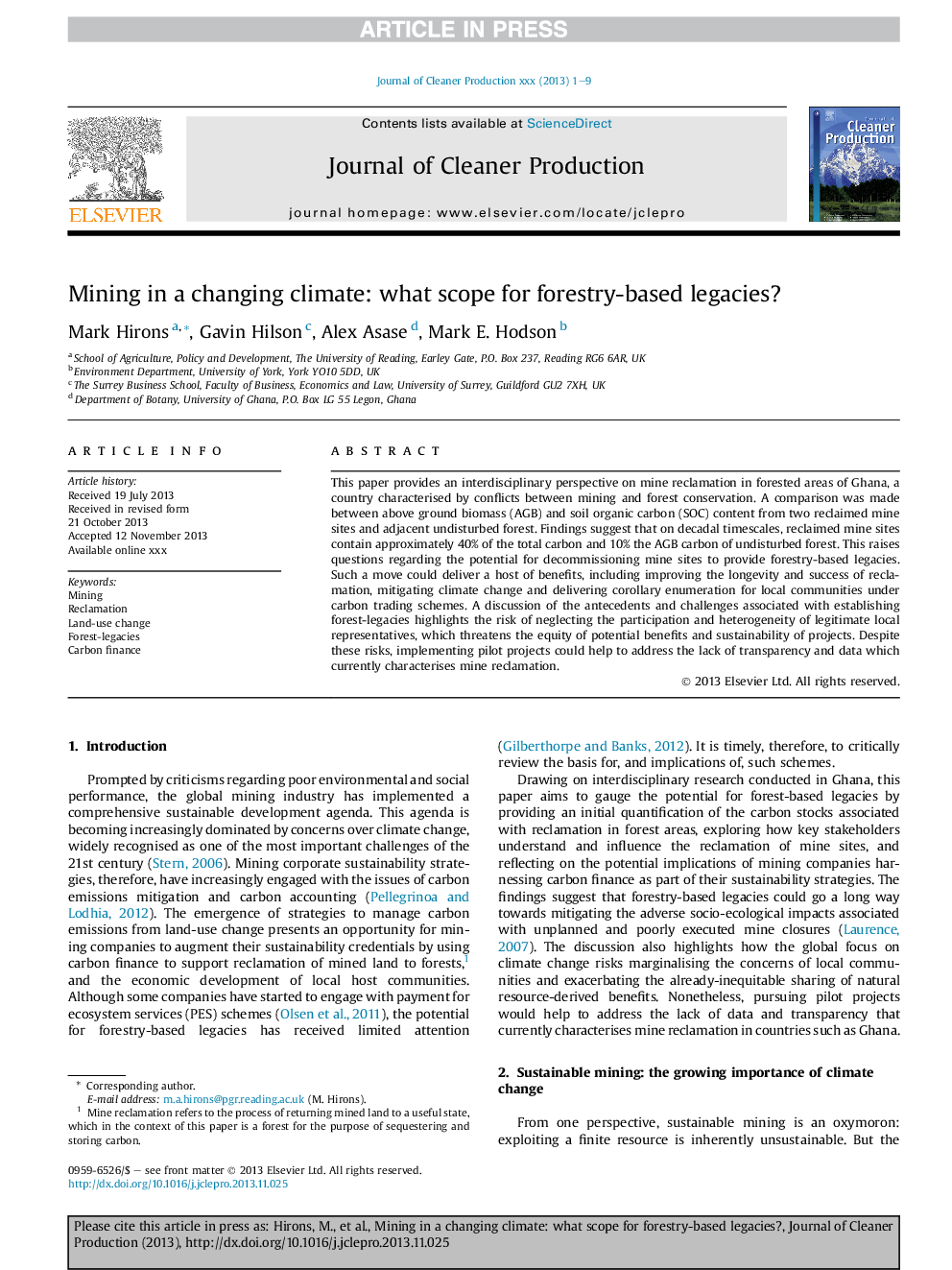| Article ID | Journal | Published Year | Pages | File Type |
|---|---|---|---|---|
| 8105644 | Journal of Cleaner Production | 2014 | 9 Pages |
Abstract
This paper provides an interdisciplinary perspective on mine reclamation in forested areas of Ghana, a country characterised by conflicts between mining and forest conservation. A comparison was made between above ground biomass (AGB) and soil organic carbon (SOC) content from two reclaimed mine sites and adjacent undisturbed forest. Findings suggest that on decadal timescales, reclaimed mine sites contain approximately 40% of the total carbon and 10% the AGB carbon of undisturbed forest. This raises questions regarding the potential for decommissioning mine sites to provide forestry-based legacies. Such a move could deliver a host of benefits, including improving the longevity and success of reclamation, mitigating climate change and delivering corollary enumeration for local communities under carbon trading schemes. A discussion of the antecedents and challenges associated with establishing forest-legacies highlights the risk of neglecting the participation and heterogeneity of legitimate local representatives, which threatens the equity of potential benefits and sustainability of projects. Despite these risks, implementing pilot projects could help to address the lack of transparency and data which currently characterises mine reclamation.
Related Topics
Physical Sciences and Engineering
Energy
Renewable Energy, Sustainability and the Environment
Authors
Mark Hirons, Gavin Hilson, Alex Asase, Mark E. Hodson,
